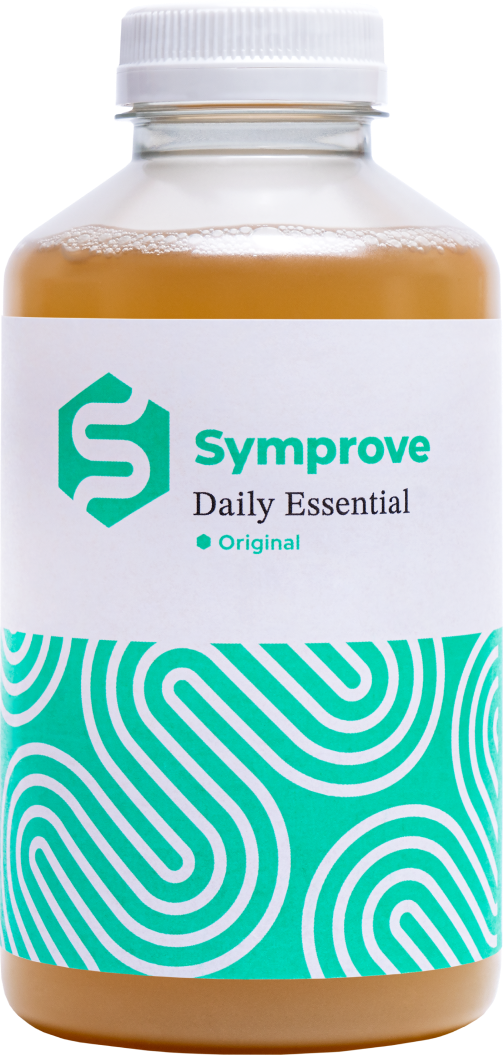What is fibromyalgia?
The diagnostic criteria for fibromyalgia have undergone numerous iterations since 1990, the first year of publication. Initially, the American College of Rheumatology (ACR) criteria considered the presence of widespread body pain (left and right sides of the body, above and below the waist, and the axial skeleton) and a tender point count (pain on palpation in ≥ 11 of 18 tender point sites). Following revisions in 2010 (1) and 2011 (2), the latest iteration of the criteria, published in 2016 (3), considered the following:
- Generalized pain, defined as pain in at least four of five locations
- Symptoms present at a similar intensity for at least three months
- A Widespread Pain Index (WPI) ≥ 7 and Symptom Severity Scale (SSS) ≥ 5 or a WPI of 4–6 and SSS ≥ 9
- A fibromyalgia diagnosis is valid regardless of previous diagnoses
The WPI (maximum score 19) considers 19 locations across the body and patients must demonstrate where they had pain in the previous week (one point per painful area). The SSS (maximum score 12) is a composite of fatigue, sleep disorders, cognitive signs, and somatic complaints. Each symptom is scored between 0 and 3 based on intensity or quantity.
Why is fibromyalgia relevant in gastroenterology?
The association between fibromyalgia and gastrointestinal disorders has been studied in the context of disorders of gut-brain interaction (DGBI) (4), previously referred to as functional gastrointestinal disorders, inflammatory bowel disease (5), and liver disease (6). For brevity, this article will exclusively address DGBI, which affect 40.3% of adults in the general population (7) and are diagnosed in one in three new adult referrals to luminal gastroenterology clinics (8).
Irritable bowel syndrome (IBS) is arguably the most well-known and researched DGBI with a prevalence of 4.3% in the UK population (9). One systematic review of comorbidities in IBS demonstrated that 28–59% of subjects with fibromyalgia had IBS, and 32–77% of those with IBS have fibromyalgia (10). These data were substantiated by a more recent systematic review which demonstrated that 46.2% of patients with fibromyalgia have IBS (11).
The co-existence of fibromyalgia and IBS suggests a common aetiology for the two diseases, possibly relating to alterations in the brain-gut axis, which broadly refers to the bi-directional neuronal, endocrine and immune pathway between the central nervous system (brain and spinal cord) and enteric nervous system (12). A major component of the brain-gut axis is the microbiome, which refers to the collection of bacteria, archaea and eukaryotes that colonize the gastrointestinal tract (13).
What microbial alterations have been identified in the gastrointestinal tract of patients with fibromyalgia?
Pimentel et al. (14) were perhaps the first to report the existence of potential microbial alterations in persons with fibromyalgia. In their prospective study, they demonstrated that a greater proportion of patients with fibromyalgia had an abnormal lactulose hydrogen breath test – contentiously used for the diagnosis of small intestinal bacterial overgrowth (15) – compared with healthy controls (20% vs 100%, P<0.001). The degree of somatic pain in fibromyalgia also correlated with the hydrogen concentration.
The microbial architecture of patients with fibromyalgia has been studied in greater detail in more recent high-quality case-control studies (16), two of which have interesting parallels (17,18). Without boring readers with a verbose description of specific alterations in microbial taxa, Minerbi et al. (17) demonstrated a statistically significant associated between the differential abundance of specific taxa with the 2016 ACR criteria and quality of life scores. Changes in the abundance of specific bacterial species (Parabacteroides merdae and Akkermansia muciniphila) identified in their study are reported to be involved in gamma-aminobutyric acid (GABA) and glutamate metabolism. Both GABA and glutamate have a role in pain signaling in the central nervous system (19,20).
Similarly, other investigators demonstrated alterations in bacterial gene expression that are involved in glutamate and GABA metabolism (Bifidobacterium and Lactobacillus) (18). Together these data from case-controlled settings provide preliminary evidence to support the presence of microbial dysbiosis in the gastrointestinal tract of patients with fibromyalgia. Therefore, probiotics, which are purported to rebalance the gastrointestinal microbiome, may represent a potential therapeutic strategy to manage non-visceral pain.
What randomized controlled trials support the use of probiotics in the management of fibromyalgia?
The efficacy of probiotics in the management of visceral pain, such as IBS (21), has arguably been studied in greater detail vs non-visceral pain. To my knowledge, a single randomized controlled (n: probiotic group=16, placebo n=15) has evaluated the role of probiotics (cellulose pills containing multiple bacterial genera, including Lactobacillus), in the treatment of fibromyalgia (ACR criteria) (22). Compared to baseline, over the course of the eight-week study period, there was no statistically significant change in depressive symptoms, anxiety levels, quality of life, or pain, measured using the Beck Depression Inventory, State-Trait Anxiety Inventory, Short Form-36, and Visual Analogue Scale, respectively.
However, reassuringly, the results indicated that the multispecies probiotic strain improved impulsivity and decision-making, both of which are known to be impaired amongst patients with fibromyalgia (23,24). The authors posited that the improvement in emotion-based decision-making could have arisen secondary to the neuromodulatory effects of serotonin and dopamine via the vagus nerve and the hypothalamus (22).
Conclusion
Although probiotics are not mentioned in the UK Royal College of Physicians’ guidelines on fibromyalgia (25), given emerging data suggesting a putative role for dysbiosis in the development of chronic pain (17,18), together with evidence supporting the use of probiotics in the treatment of visceral pain (26), it may not be entirely unreasonable to trial such a food supplement as an adjunct to standard treatment for fibromyalgia. Aligned with guidance from the British Society of Gastroenterology, although mentioned in the context of IBS, probiotics should be taken for up to 12 weeks before symptom improvement in noticed. If no symptom improvement is noticed, they should be discontinued (27).
Disclaimer
This content has not been peer-reviewed and is for informational and educational purposes only. It is not intended for medical advice. It does not take the place of medical advice or treatment from a physician. Readers should consult their own doctor or healthcare professional for specific health concerns and questions.
References:
- Wolfe F, et al. Arthritis Care Res (Hoboken) 2010;62(5):600-10.
- Wolfe F, et al. J Rheumatol 2011;38(6):1113-22.
- Wolfe F, et al. Semin Arthritis Rheum 2016;46(3):319-29.
- Almansa C, et al. Clinical Gastroenterology and Hepatology 2009;7(4):438-45.
- Larrosa Pardo F, et al. European Journal of Pain 2019;23(8):1563-73.
- Rogal SS, et al. Dig Dis Sci 2015;60(5):1482-9.
- Sperber AD, et al. Gastroenterology. 2021;160:199-114.
- Shivaji UN, et al. Frontline Gastroenterol 2014;5(4):266-271.
- Jaafari H, et al. Neurogastroenterol Motil 2023;35(6):e14574.
- Whitehead WE, et al. Gastroenterology 2002;122(4):1140-56.
- Erdrich S, et al. Therap Adv Gastroenterol 2020;13:1756284820977402.
- Aziz Q, et al. Gastroenterology 1998;114(3):559-78.
- Thursby E, et al. Biochem J 2017;474(11):1823-36.
- Pimentel M, et al. Ann Rheum Dis 2004;63(4):450-2.
- Kashyap P, et al. Neurogastroenterol Motil 2024;36(6):e14817.
- Erdrich S, et al. BMC Musculoskelet Disord 2020;21(1):181.
- Minerbi A, et al. Pain 2019;160(11):2589-602.
- Clos-Garcia M, et al. EBioMedicine 2019;46:499-511.
- Pyke TL, et al. Clin J Pain 2017;33(10):944-54.
- Pomares FB, et al. Pain 2020;161(1):74-82.
- Goodoory VC, et al. Gastroenterology 2023;165(5):1206-18.
- Roman P, et al. Sci Rep 2018;8(1):10965.
- Verdejo-García A, et al. Arch Clin Neuropsychol 2009;24(1):113-22.
- Correa A, et al. Brain Cogn 2011;75(3):211-6.
- Berwick R, et al. Clin Med (Lond) 2022;22(6):570-4.
- Sisson G, et aI. Aliment Pharmacol Ther 2014;40(1):51-62.
- Vasant DH, et al. Gut 2021;70(7):1214-40.



